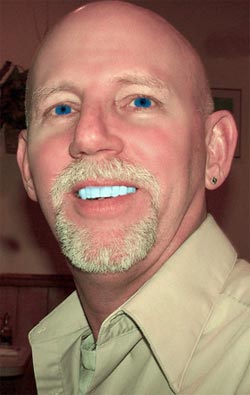
Reverse Hair Loss and Regrow Hair
www.whatcausesbaldness.net is written or edited by health professionals



|
Reverse Hair Loss and Regrow Hair www.whatcausesbaldness.net is written or edited by health professionals |


|
|
DISCLAIMERS ETC
Hi, I'm Donald, and I'm the new owner of WhatCausesBaldness .net I hope you like the changes that are being introduced and all the new information on baldness and hairloss. Copyright © 2000-present Donald Urquhart. Thank you for visiting. |
Female BaldnessOn this page I will explain many of the causes of female baldness, and many of the more frequently seen types of female baldness patterns. Of course, knowing the cause, often determines the preferred treatment.
Definition of Balding - AlopeciaThe definition of balding or excessive hair loss, is the loss of more than 100 hairs a day.
Causes of Female Baldness / alopecia / hair loss
The types and patterns of common female hair loss, alopecia and baldingFemale androgenic alopecia - is the classic type of female baldness - also sometimes referred to as common baldness. Whereas androgenetic alopecia accounts for almost 95% of mens baldness - male pattern baldness - that amount is significantly smaller for female baldness (around 25% I believe). Female androgenetic alopecia does occur for somewhat different reasons to men; in female androgenic alopecia, the cause is often stress induced hormonal changes. Specifically in female androgenic baldness, the hair is lost from the top of the scalp and in a diffuse way - more akin to hair thinning out - whereas in males it tends to be the front and top, starting at a focal point then working out, initially as hair thinning, but then progresses to areas denuded of hair. True female baldness is very rare. So when we talk about female baldness, for the most part, we are talking about substantial hair loss, but not actual baldness. In men, androgenic baldness results from testosterone being converted to DHT, the same is true for females, it can be a combination of a drop in estrogen production coupled with a substantial increase in production of testosterone, but testosterone does exist in females in small quantities as a normal thing, and the testerone does get converted to DHT, and that DHT is responsible for androgenic female baldness. Hence females with androgenic baldness may benefit from those drugs and medications and remedies which target male baldness eg via suppressing DHT at the hair follicle level.
Alopecia areata - a type of female baldness that can be an auto-immune disorder or of hormonal cause. Alopecia areata causes isolated or patchy hair loss that can range from areas with thinning hair to large clusters of retained hair on an otherwise bald head. It is necessary to have a medical examination to reach a diagnosis as to cause, as this type of female baldness can be due to all the causes listed above. Once the cause of this type of baldness is dealt with or resolves itself, hair regrowth is likely. Menopausal Baldness - this is female hair thinning, that not only involves a reduction in the number of hair follicles actively growing hairs, but also the thinning of the actual hairs themselves, given the hair a less full bodied appearance as well. As you can guess, it's all about hormonal changes related to menopause. A totally unique female alopecia: Post Partum Alopecia - can occur during pregnancy, and even up to a year after the baby is born or miscarried. Primarily caused by hormonal changes, post partum baldness can also cause considerable stress, which can and often does, make the hair loss even worse. Obviously, once the hormones settle down, the hair regrowth is expected. Hair is very patchy, as the same areas are constantly pulled. This type of female baldness is untreatable until the emotion or psychological causes of the disorder can be dealt with.
Triangular alopecia – this is hair loss in the temporal areas, often beginning during childhood. The condition can be treated surgically or medically, at its worst, this type of female baldness can vary from a complete loss of hair to a retainment of only few thin and weak hairs. Telogen effluvium is a very common type of female baldness, and can be caused by a variety of things, mainly nutritional - lack of iron in the diet -but can often be stress caused as well, with the stress altering the hormones which control hair growth. Telogen effluvium can sometimes be due to drug associated problems. Loose-anagen syndrome causes scalp hair to sit loosely in follicles and, thus, enables it to be easily extracted by any tugging of the hair, as in combing and brushing and the like. This female baldness typically improves as you age, although absolute recovery does not always occur.
Concluding Remarks on Female BaldnessIf you believe you have permanent or temporary hair loss - female baldness - check with your doctor or maybe a hair specialist with a medical background, that can diagnose you and your hair, and recommend a proper medical or surgical treatment. The second step will obviously be, then, to weigh up what you have found out and, if you agree, take the suggested course of action and remedy any hair loss that may have occurred.
But first, if you want to come back to www.whatcausesbaldness.net again, just add it to your bookmarks or favorites now! Then you'll find it easy! Also, please consider sharing our helpful website on baldness and it's treatment with your online friends.
|